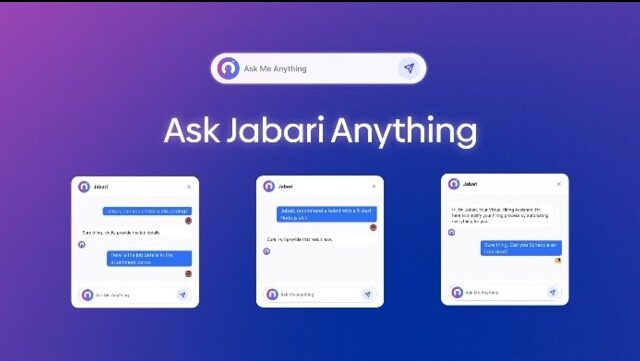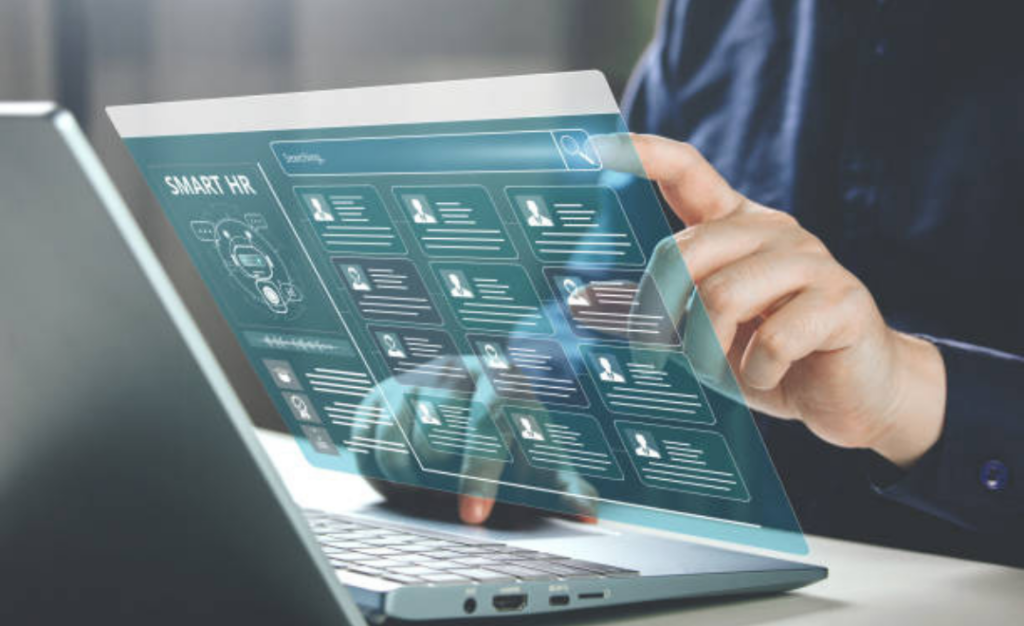Generative AI is rapidly transforming industries, and Human Resources (HR) is one of the sectors poised to benefit significantly from this technological advancement. From streamlining recruitment processes to enhancing employee engagement, the integration of generative AI into HR practices offers immense value. As HR professionals seek new ways to improve efficiency, personalization, and decision-making, generative AI is emerging as a game-changer.
What is Generative AI?
Generative AI refers to machine learning models that can create new data or content. Unlike traditional AI models, which rely on existing datasets to make predictions, generative AI can produce new text, images, or simulations based on patterns it has learned. This capability is particularly beneficial in HR, where tasks like drafting job descriptions, generating personalized training materials, or creating employee engagement surveys can be automated and optimized.
Generative AI models, such as OpenAI’s GPT-4 or DALL·E, use advanced natural language processing (NLP) and deep learning techniques to understand human language, interpret patterns, and generate coherent and contextually relevant outputs. The technology is not only reshaping content generation but also improving decision-making and personalization in various fields, including HR.
Overview of AI in Human Resources
Artificial Intelligence (AI) in HR has been around for a few years, with applications ranging from automated resume screening to predictive analytics in talent management. HR departments use AI to analyze large volumes of employee data, assess candidates more effectively, and automate repetitive tasks like onboarding, training, and performance evaluation.
However, generative AI takes this a step further by allowing HR professionals to generate content, interact with employees on a personalized level, and make better-informed decisions. It enables HR teams to do more with less, cutting down on administrative burdens and allowing HR professionals to focus on strategic initiatives.
The role of AI in HR can be grouped into three main categories:
- Automation: Reducing the time spent on repetitive tasks.
- Optimization: Improving the efficiency of HR processes.
- Personalization: Tailoring HR practices to individual employee needs.
Now, let’s explore deeper into the five key benefits of using generative AI in HR.
5 Key Benefits of Generative AI in HR
1. Streamlined Recruitment and Talent Acquisition
Recruitment is one of the most time-consuming aspects of HR. From sifting through thousands of resumes to conducting interviews and onboarding, traditional recruitment processes can take weeks or even months. Generative AI can automate several parts of this process, reducing both the time and effort required. Here’s how it works:
Creating Job Descriptions
Crafting job descriptions that attract the right talent is an art, but it’s also time-consuming. Generative AI can create optimized job descriptions based on industry best practices and trends. It can analyze the success of previous job postings, identify key terms that resonate with job seekers, and generate descriptions that are more likely to attract high-quality candidates.
Automating Candidate Screening
One of the most tedious tasks in recruitment is reviewing hundreds or even thousands of resumes for a single job position. Generative AI tools can automatically screen resumes by identifying the most relevant skills and experiences based on the job description. AI-powered platforms can analyze resumes in a fraction of the time it would take a human recruiter, ensuring that only the most qualified candidates move to the next stage.
Automated Candidate Engagement
Keeping candidates engaged throughout the hiring process is essential, but it can be challenging for HR professionals to manage every touchpoint. Generative AI chatbots can be used to interact with candidates, answer their questions, schedule interviews, and provide updates, offering a seamless and engaging experience without overwhelming the HR team.
2. Personalized Employee Development and Training
Once employees are onboarded, retaining them and fostering their growth becomes the priority. One-size-fits-all employee development plans are becoming obsolete in today’s dynamic work environment. Employees demand personalized growth opportunities tailored to their skills, interests, and career aspirations. Generative AI enables HR teams to offer custom-tailored learning and development (L&D) programs by analyzing employee data and generating personalized training plans.
Customizing Learning Paths
Traditional training programs often take a one-size-fits-all approach, which may not be effective for every employee. Generative AI can analyze each employee’s skill set, job role, and aspirations, then create a customized learning path to help them develop in areas where they need improvement. This personalized approach ensures employees receive training that’s relevant to their needs, leading to higher engagement and better performance.
Automating Feedback and Development Insights
Continuous feedback is essential for employee growth, but managers may not always have the time to provide detailed feedback regularly. Generative AI can automatically generate reports that assess an employee’s progress and suggest areas for improvement based on their work patterns and goals. These insights can help HR teams and managers make data-driven decisions regarding promotions, training needs, and employee development.
3. Streamlined Onboarding and Employee Experience
Onboarding is a crucial step in the employee journey, as it sets the tone for an employee’s experience with the company. A well-structured onboarding process improves employee retention and satisfaction. Generative AI can enhance the onboarding process by offering a personalized, streamlined experience that ensures new hires feel welcomed and supported from day one.
Automating Onboarding Documentation
HR professionals often spend significant time preparing documents for new hires, including contracts, benefits information, and company policies. Generative AI can automate the creation and distribution of onboarding documents, ensuring that all necessary paperwork is completed efficiently. This not only saves time but also reduces the likelihood of human error.
Personalized Onboarding Journeys
Generative AI can also create customized onboarding plans based on a new hire’s role and department. It can tailor the onboarding experience to ensure that new employees receive the information and training most relevant to their position. Personalized onboarding plans increase employee satisfaction and help new hires become productive more quickly.
Answering Employee Queries
AI-powered chatbots can provide immediate answers to new hires’ questions about policies, procedures, and benefits. This allows HR professionals to focus on more complex tasks while ensuring that employees receive the information they need promptly.
4. Improved Decision-Making through Data-Driven Insights
In HR, making the right decisions about hiring, employee development, and retention is critical to the success of an organization. Generative AI can process vast amounts of data to provide insights that inform decision-making, allowing HR teams to be more strategic in their approach.
Analyzing Employee Engagement and Satisfaction
Generative AI can analyze data from employee surveys, feedback forms, and engagement platforms to assess the overall morale and satisfaction of the workforce. This allows HR teams to identify potential issues before they escalate and address them proactively. For example, if AI identifies a trend of declining engagement in a specific department, HR can investigate and take action to improve the work environment.
Predictive Analytics for Employee Retention
One of the most significant challenges in HR is retaining top talent. Generative AI can help by analyzing patterns in employee data to predict which employees may be at risk of leaving the organization. By identifying these trends early, HR teams can implement retention strategies, such as offering promotions or providing additional training.
Optimizing Workforce Planning
Generative AI can assist in workforce planning by predicting future hiring needs based on trends in business growth, employee turnover, and market conditions. This allows HR teams to be proactive in their hiring efforts, ensuring that the organization is always adequately staffed.
5. Increased Efficiency through Automation of Administrative Tasks
HR departments are often bogged down by repetitive administrative tasks that take up valuable time and resources. Generative AI can automate many of these tasks, allowing HR professionals to focus on more strategic initiatives.
Automating Payroll and Benefits Management
Managing payroll and benefits can be a time-consuming process, especially for large organizations. Generative AI can automate the calculation and distribution of payroll, ensuring that employees are paid accurately and on time. It can also manage employee benefits, including health insurance, retirement plans, and paid time off, reducing the administrative burden on HR teams.
Streamlining Compliance and Reporting
Compliance with labor laws and regulations is essential, but keeping track of changing requirements can be challenging. Generative AI can automatically generate compliance reports, ensuring that the organization meets all legal requirements. It can also track changes in labor laws and update company policies accordingly, reducing the risk of non-compliance.
Managing Employee Records
Maintaining accurate and up-to-date employee records is crucial for any HR department. Generative AI can automate the process of updating employee records, ensuring that all information is accurate and easily accessible. This reduces the risk of errors and saves HR professionals valuable time.
Challenges of Implementing Generative AI in HR
While the benefits of generative AI in HR are clear, there are several challenges that organizations must address before fully integrating AI into their HR processes:
- Data Privacy and Security: AI relies on large datasets, which often contain sensitive employee information. Ensuring that this data is handled securely and in compliance with data protection regulations is crucial.
- Bias in AI Models: Although AI can help reduce bias, it is not entirely immune to it. If the data used to train AI models is biased, the AI’s outputs will also be biased. Continuous monitoring and auditing of AI systems are essential to mitigate this risk.
Conclusion
Generative AI is transforming HR by automating administrative tasks, improving recruitment and onboarding processes, providing personalized employee development, and offering data-driven insights for better decision-making. By leveraging the power of AI, HR teams can become more efficient, strategic, and responsive to the needs of their employees.
As the technology continues to evolve, organizations that embrace generative AI will be better positioned to attract and retain top talent, foster employee satisfaction, and remain competitive in a rapidly changing business environment.







